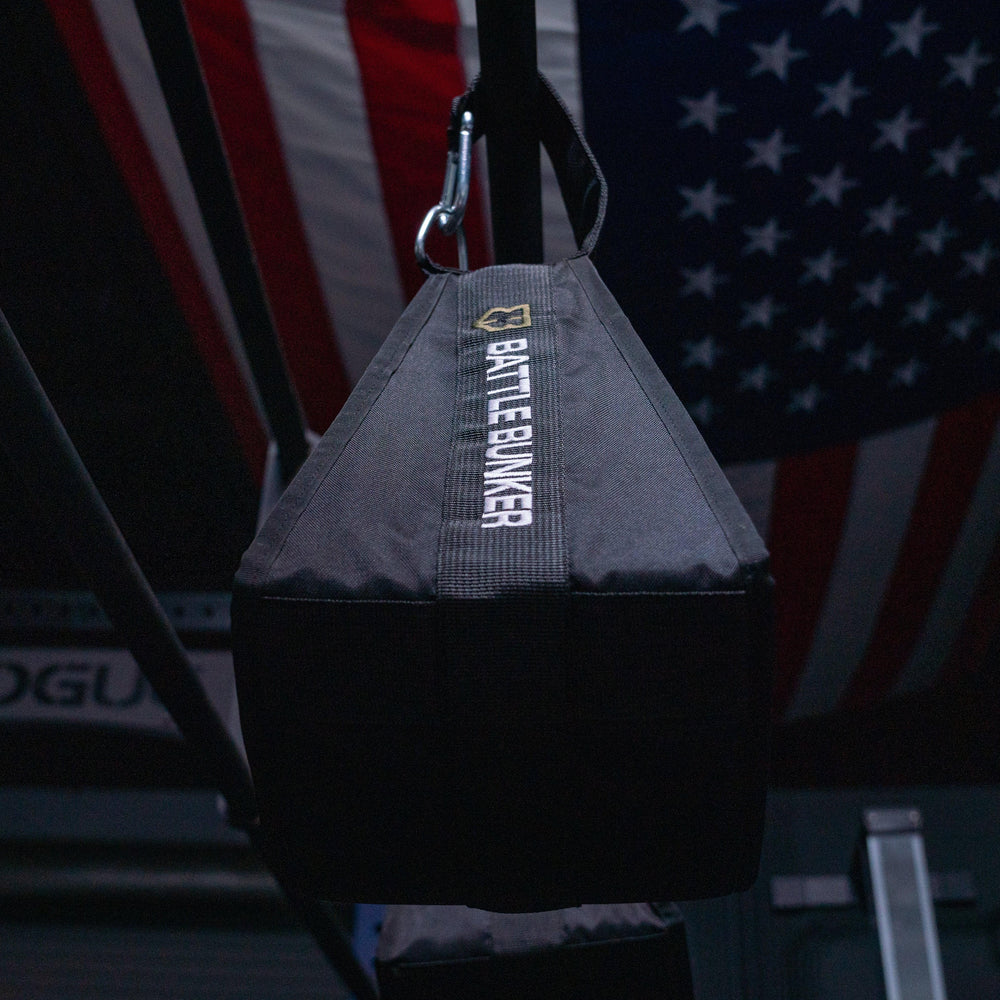Resistance bands are versatile, portable, and highly effective tools that can elevate any fitness routine. From strengthening your core to enhancing flexibility, these bands can help you target almost every muscle group. Whether you're new to resistance training or a seasoned athlete, this guide will show you the top 7 exercises to get the most out of your bands.
Reasons to use Resistance Bands:
- Use them anytime, anywhere
- Versatile training saves times and incorporates varying exercises
- Different levels help you advance as your strength grows
Table of Content
7 Effective Excercises Using Resistance Bands
1.) Pull-Ups
Stance: Secure the resistance band to a pull-up bar and place one foot or knee into the loop, ensuring the band is securely anchored.
Arms: Grip the pull-up bar slightly wider than shoulder-width apart. Your palms should face away from you.
Gaze: Look straight ahead, keeping your neck neutral and spine aligned.
Story: Pull-ups are one of the most effective exercises for upper body strength, but they can be challenging, especially for beginners. Resistance bands, sometimes called pull-up assist bands, were developed to help athletes of all levels master pull-ups by reducing the amount of bodyweight they need to lift. These bands have become an essential tool in gyms and home fitness setups around the world.
Role & Benefits: Resistance bands offer assistance in pull-ups, making them accessible for everyone while ensuring a full range of motion. Using resistance bands for pull-ups:
- Provides support, allowing you to focus on proper form and technique.
- Helps build strength in the back, shoulders, and arms, enabling progression to unassisted pull-ups.
- Reduces joint strain, making it an excellent option for those recovering from injuries or starting new fitness routines.

Pros:
- Assistance for Beginners: Makes pull-ups accessible for those who struggle with unassisted versions.
- Strength Builder: Gradually helps build the required muscle strength and endurance for unassisted pull-ups.
- Improves Technique: Allows users to focus on proper form without overexerting, reducing the risk of injuries.
- Joint-Friendly: Lowers stress on joints and tendons, making it ideal for recovery or beginners.
- Versatile: Can be used for various grip styles and muscle activation, targeting different areas of the back and arms.
Cons:
- Limited Resistance Adjustability: May not provide the exact assistance needed if you’re between resistance levels.
- Dependency Risk: Relying too much on bands can hinder progress to unassisted pull-ups.
- Setup Time: Setting up and adjusting the band might take a bit longer compared to traditional pull-ups.
Must Have Products For Beginners
2.) Tricep Pulldown
Stance: Stand upright with feet shoulder-width apart. Secure the resistance band to an overhead anchor or hold one end of the band in each hand if using a loop band.
Arms: Extend your arms straight down by your sides with a slight bend in the elbows, holding the band taut. Your hands should be aligned with your shoulders.
Gaze: Look forward with a neutral neck position to maintain proper alignment.
Story: Tricep pulldowns mimic the motion used in traditional cable pulldowns at the gym, but with the convenience and versatility of resistance bands. This exercise has been adapted from the traditional weight machines to provide the same muscle activation using a portable and accessible tool. Resistance bands have become the go-to for those looking to tone their triceps without needing expensive gym equipment.
Role & Benefits: The Tricep Pulldown with resistance bands effectively isolates and strengthens the tricep muscles.
- Builds Upper Arm Strength: Targets and tones the triceps, making your arms look more defined.
- Increases Stability: Improves shoulder and elbow stability as you control the resistance throughout the movement.
- Convenient & Portable: Perfect for workouts at home or on the go, with no heavy equipment needed.

"Resistance bands are like the perfect deployment buddy—compact, versatile, and ready to adapt to any challenge, no matter where the mission takes you."
3.) Alternate Lat Pulldown
Stance: Sit on the ground or stand upright, securing the resistance band to a high anchor point above you.
Body: Lean back slightly if sitting, or keep a strong core if standing. Pull the band downwards with elbows bent at 90 degrees, squeezing your lats.
Head: Keep your head neutral, looking forward to maintain spinal alignment.
Story: The Alternate Lat Pulldown with resistance bands mimics the traditional cable lat pulldown but offers unique advantages in terms of convenience and control. Whether you're on the go or setting up a home workout, this exercise can easily substitute a gym machine, targeting the same muscles without the need for heavy equipment.
Role & Benefits: The Alternate Lat Pulldown is an excellent back-building exercise.
- Strengthens the Lat Muscles: Provides an effective way to engage and strengthen the lats, creating that desired 'V' shape.
- Enhances Grip Strength: Improves hand and forearm strength as you control the resistance through each pull.
- Perfect for Limited Space: Can be performed anywhere, making it ideal for those with limited workout space or on deployment.

4.) Bicep Curl with Resistance Bands
Stance: Stand upright with feet shoulder-width apart. Step on the resistance band with both feet to create the desired tension.
Body: Keep your torso upright and your elbows close to your sides. Curl the band upward by flexing your elbows, then slowly lower back down.
Head: Maintain a neutral gaze, looking forward to keep your posture stable and aligned.
Story: The Bicep Curl with resistance bands replicates the classic dumbbell curl but with added flexibility. Imagine using the power of resistance to build your biceps anywhere you go, whether in a cramped barracks or out in the field. This exercise has become a favorite among fitness enthusiasts and service members for its adaptability and effectiveness.
Role & Benefits: The Bicep Curl is a staple for developing arm strength and aesthetics.
- Builds Arm Size: Targets the bicep muscles, enhancing arm definition and size.
- Improves Muscle Endurance: Provides a variable resistance throughout the range of motion, boosting muscle endurance.
- Adaptable Resistance Levels: Easily modify the intensity by adjusting the length or thickness of the band, making it suitable for all fitness levels.

5.) Banded Lateral Raises
Stance: Stand upright with feet shoulder-width apart. Step on the resistance band with both feet and hold the ends with your hands at your sides.
Body: With a slight bend in your elbows, raise your arms laterally to shoulder height, creating a “T” shape with your body. Lower back down slowly.
Head: Keep your gaze forward and chin slightly tucked to maintain a neutral spine and stable posture.
Story: The Banded Lateral Raise mimics the classic dumbbell lateral raise but brings in a unique element of constant tension from the band. Picture the movement of spreading your wings—this exercise taps into the strength and control of the shoulder muscles. Often performed by those in tight quarters or on the go, it’s a favorite for military personnel looking to maintain strong shoulders without a full gym setup.
Role & Benefits: The Banded Lateral Raise targets the lateral deltoids, contributing to a broader and more defined shoulder profile.
- Strengthens the Shoulder Muscles: Builds up the lateral deltoids, giving the shoulders a wider appearance.
- Improves Shoulder Stability: Enhances shoulder joint stability and control, reducing the risk of injuries.
- Versatile and Convenient: Can be performed in any space, making it ideal for deployment or home workouts when space and equipment are limited.
"Resistance bands save time and space, and can still be an awesome part of a strength routine."
6.) Banded Front Raises
Stance: Stand upright with feet shoulder-width apart. Step on the resistance band with both feet, holding each end with your arms resting in front of your thighs.
Body: Keep your core engaged and raise your arms straight in front of you to shoulder height, palms facing down. Lower back down slowly with control.
Head: Maintain a forward gaze and a neutral spine, avoiding any swaying or arching of your back.
Story: The Banded Front Raise simulates the traditional front raise but offers a unique advantage with variable resistance. Picture yourself lifting your arms like raising a flag—a movement that embodies strength and precision. This exercise is highly valued for its ability to isolate and strengthen the anterior deltoids without needing bulky weights, making it a go-to choice for service members and fitness enthusiasts alike.
Role & Benefits: The Banded Front Raise is perfect for building and defining the front part of the shoulder muscles.
- Targets the Anterior Deltoids: Isolates and strengthens the front shoulder muscles, improving shoulder aesthetics.
- Increases Shoulder Stability: Enhances the stability of the shoulder joint, providing better control and reducing the risk of injury.
- Accessible and Effective: The exercise can be performed virtually anywhere, making it ideal for deployment, travel, or limited-space environments.

"Resistance bands may be small, but they pack the power to transform any workout into a strength-building powerhouse."
7.) Banded Air Squats
Stance: Stand with feet slightly wider than shoulder-width apart. Place a resistance band just above your knees, creating gentle tension.
Body: Lower your body into a squat position by pushing your hips back and bending your knees. Keep your knees aligned with your toes, and drive back up to standing.
Head: Look straight ahead, keeping your chest lifted and maintaining a neutral spine.
Story: Banded Air Squats take the classic bodyweight squat to the next level by adding resistance, which activates and strengthens the glutes, hamstrings, and quads. Imagine the tension of the band as a reminder to engage your muscles fully, making each rep more effective. This exercise is ideal for those on deployment who want to maximize their lower body workout without weights.
Role & Benefits: The Banded Air Squat is a powerhouse movement that builds lower body strength and stability.
- Activates Glutes and Quads: Adds resistance to the squat, engaging the glutes and quads more intensely.
- Improves Form and Alignment: Encourages proper knee tracking and hip alignment, promoting good squat form.
- Convenient and Effective: Requires no equipment other than a band, making it perfect for lower body workouts in any setting—whether you’re at home, at the gym, or on deployment.

Conclusion
Incorporating these resistance band exercises into your routine is more than just building muscle—it's about enhancing your overall strength, flexibility, and stability, no matter where you are. Resistance bands are the perfect tool for transforming your workouts, whether you're at home, at the gym, or even on deployment. With their portability and versatility, they unlock new ways to challenge your body and elevate your fitness game. Equip yourself with the right bands, and you’re all set to take your training to the next level.
If you want to buy resistance bands, you can check out more on our store














